
The eastern gopuram; you can see that lots of reconstruction work has been taking place outside of the temple.
27 January Hampi
I took it easy and worked on photo sorting and other projects.
For dinner I went with a good South Indian thali at The Mango Tree.
28 January Hampi
In the morning I finally went over to nearby Virupaksha Temple,
one of Hampi’s oldest. A prominent yellow 50-meter-high gopuram, built in 1442,
forms the east entrance. In one corner of the courtyard I met the temple elephant
Lakshmi, who blesses visitors with her trunk for a small fee. The temple allows
photography (Rs. 50), and there’s much artwork of stone reliefs and even old ceiling
paintings. Virupaksha, an incarnation of Shiva, in the main sanctum is actually
two Shiva lingams, each sheltered by a snake’s hood, all gleaming in silver.

The eastern gopuram; you can see that lots of reconstruction work has been taking
place outside of the temple.

Lakshmi gives a blessing while enjoying lunch.
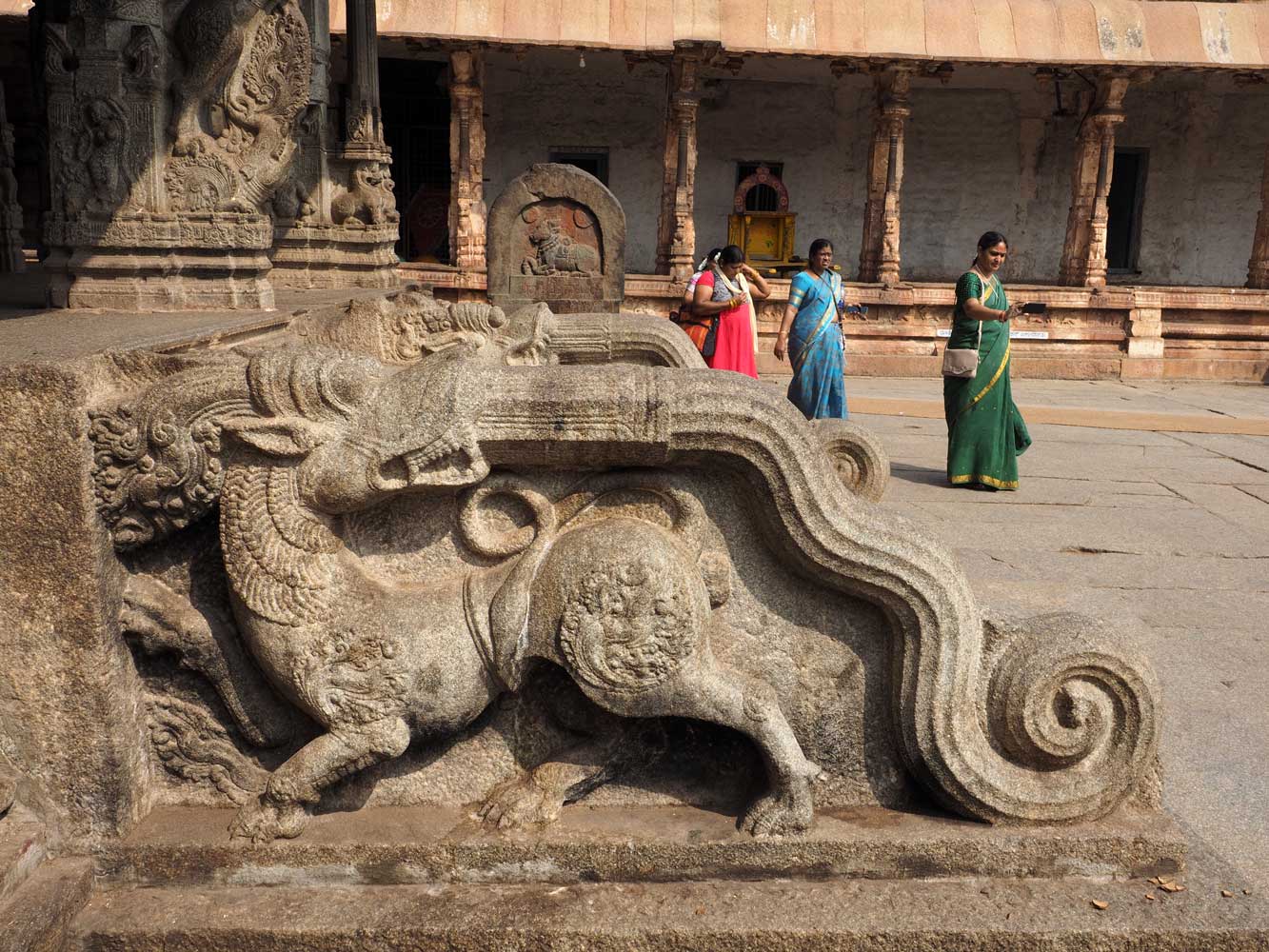
Strange creatures greet visitors at the entrance to the main shrine.
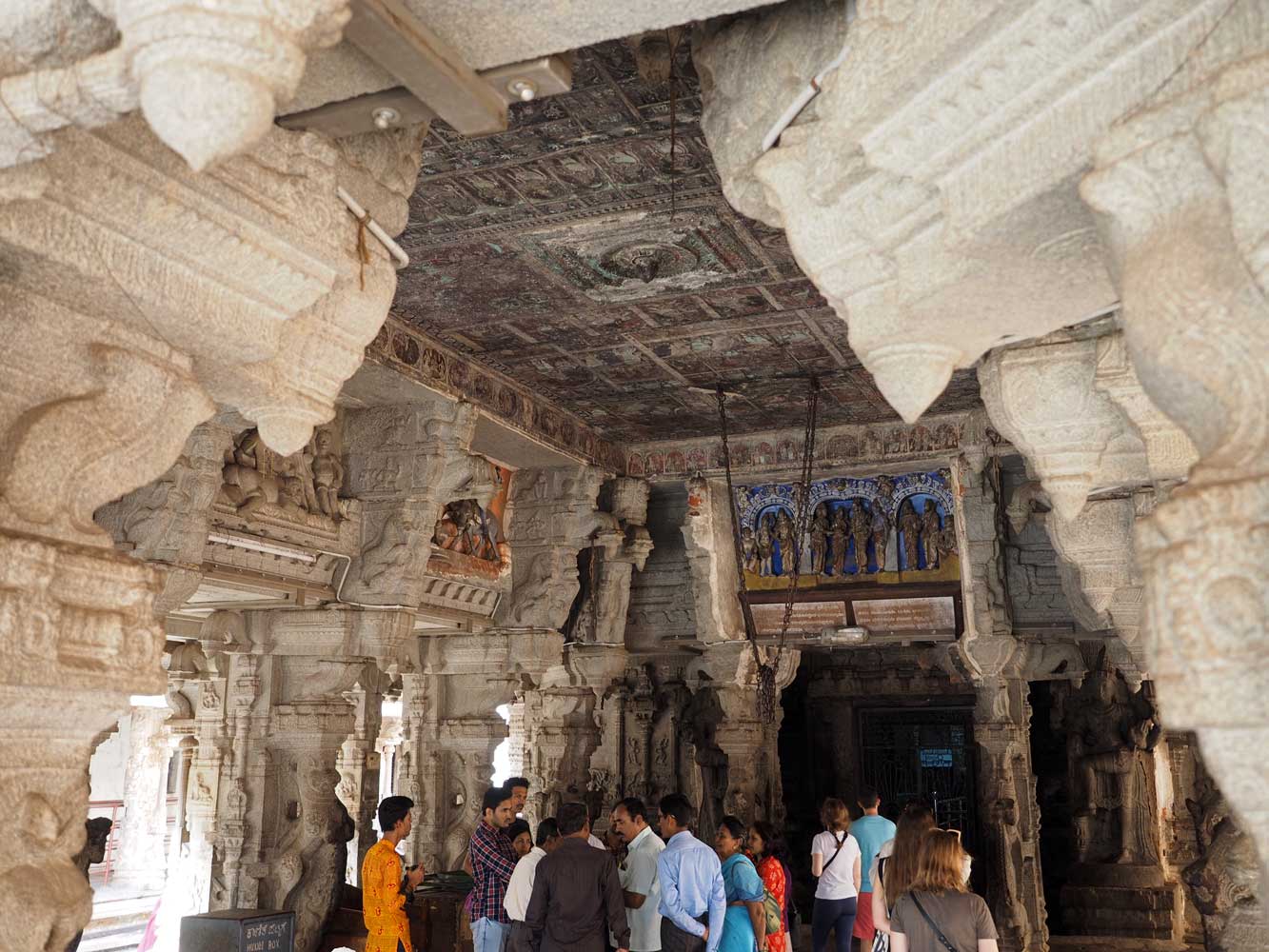
Carved stonework and painted ceiling in the porch of the main shrine
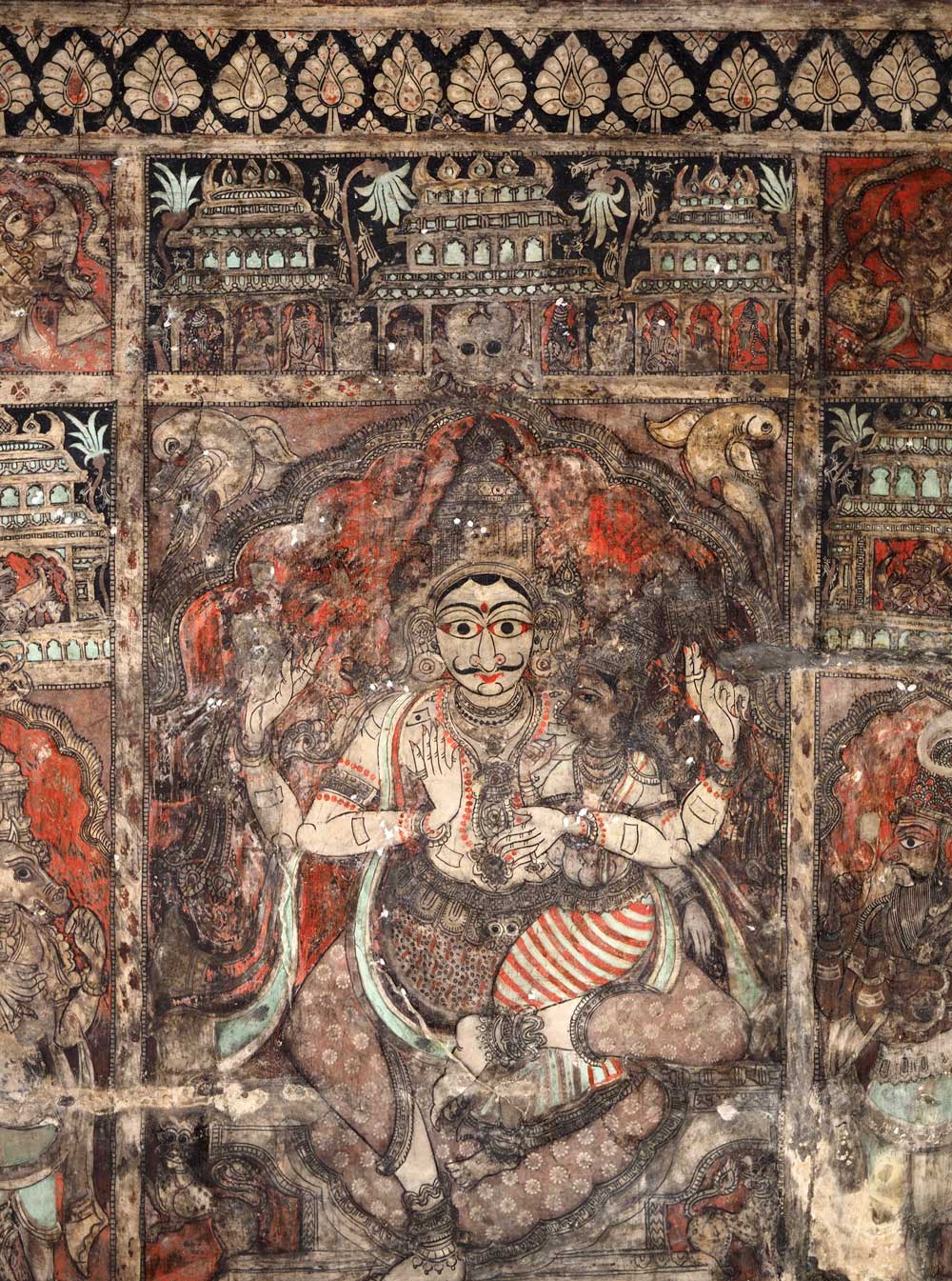
Ceiling painting detail

Ceiling painting detail
A travel agent near my guesthouse got three train tickets that would take me
all the way to Mumbai, a huge help. The first goes to Badami tomorrow, followed
three days later by a ride to Vijayapura (Bijapur), then lastly an overnight trip
to Mumbai.
In the afternoon I headed out on a loop to visit a few remaining
places I wished to see. On the east side of Hemakuta Hill I stopped to see the giant
stone image of Kadalekalu Ganesha in a well preserved temple; a woman there opened
a gate to the sanctuary. Another giant image of the elephant-headed god, Saasivekaalu
Ganesha, resides in a stone shelter on the south edge of Hemakuta Hill.
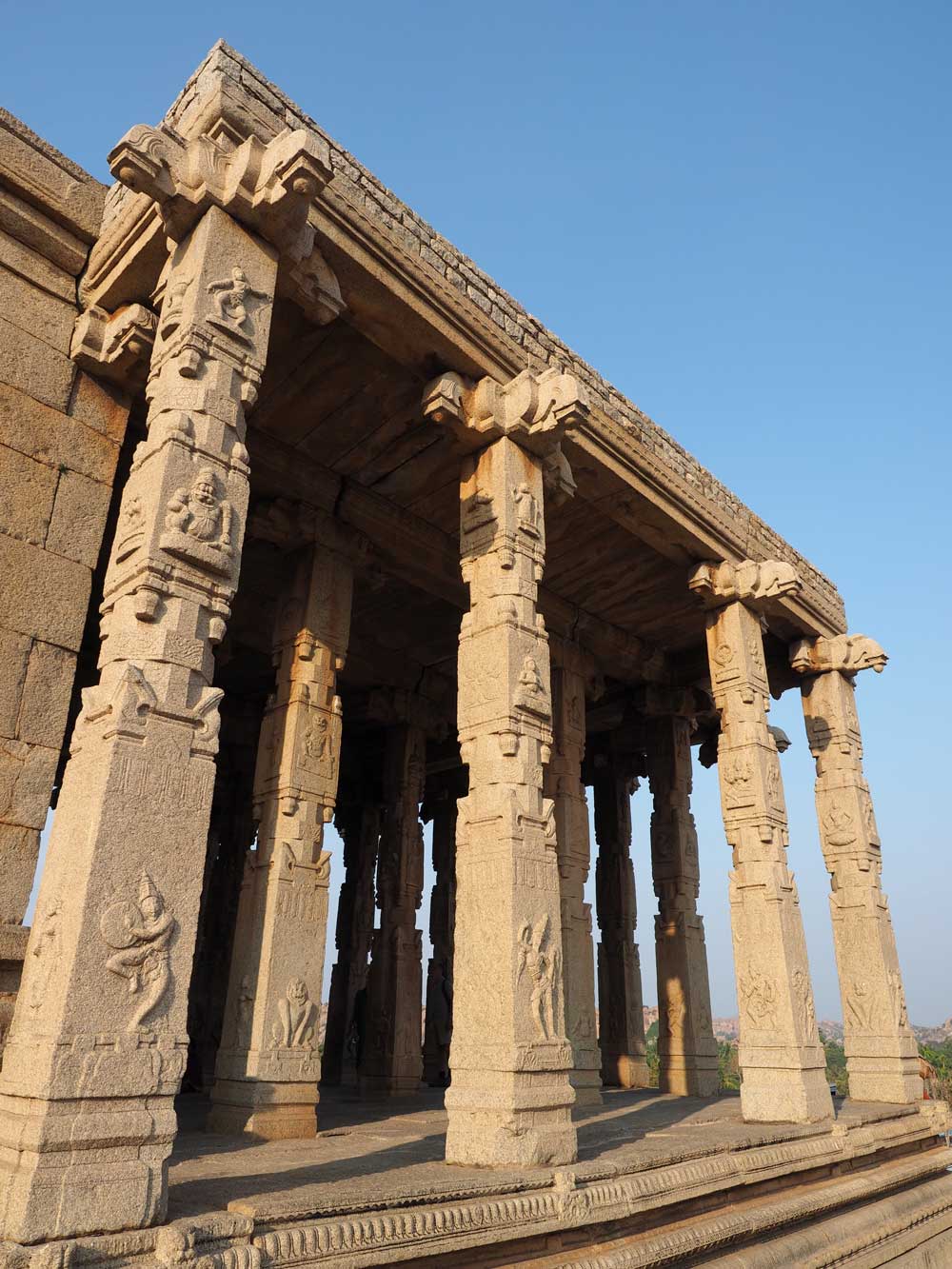
Porch of the temple that shelters Kadalekalu Ganesha
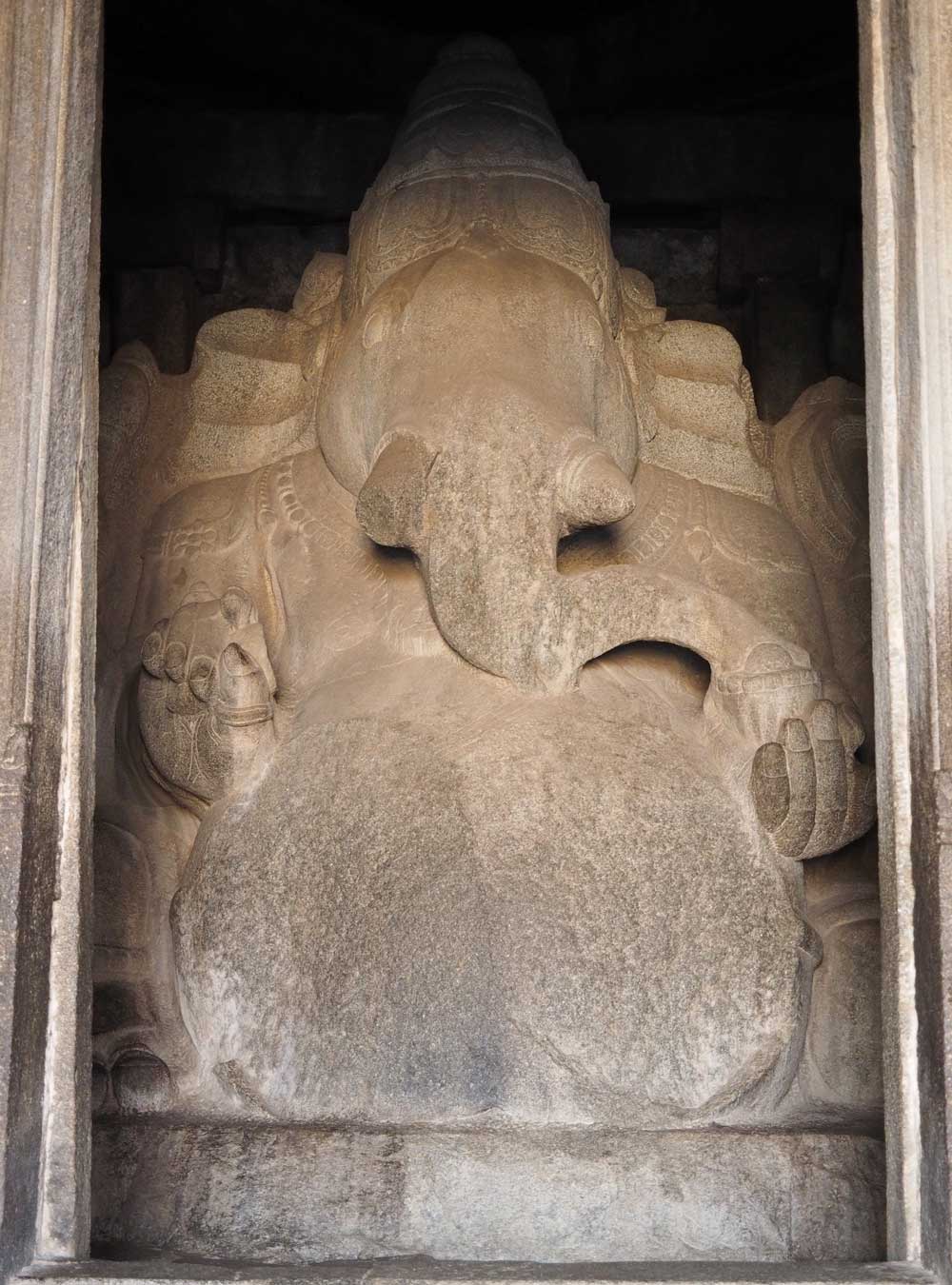
The massive Kadalekalu Ganesha
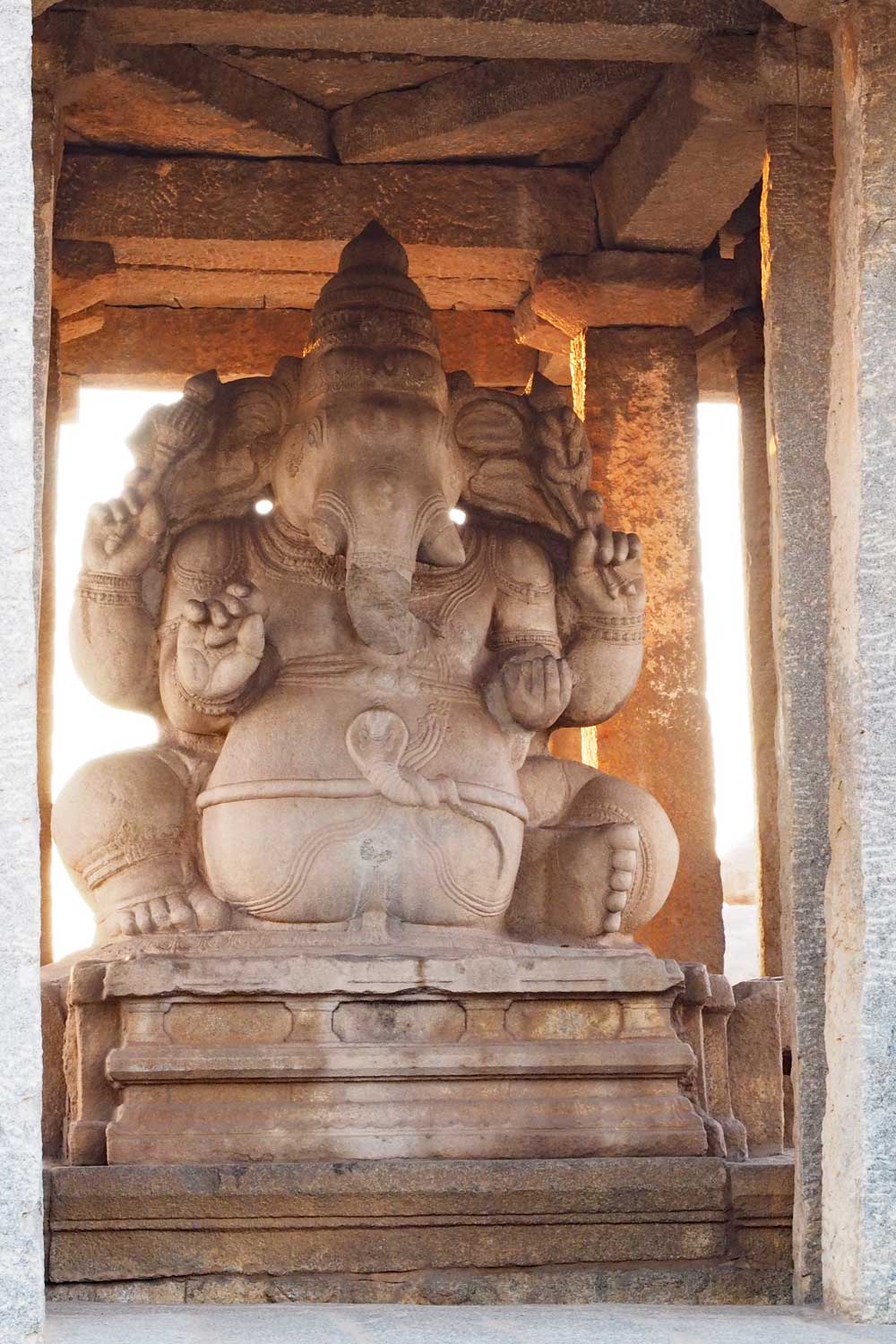
Saasivekaalu Ganesha
And there are more giants! A little farther south I found Badavilinga Temple, which houses a very large Shiva lingam in a pool of water and enclosed in a shrine. Next door stands one of Hampi’s finest statues, that of Lakshmi Narashimha, a half-lion, half-human incarnation of Vishnu.
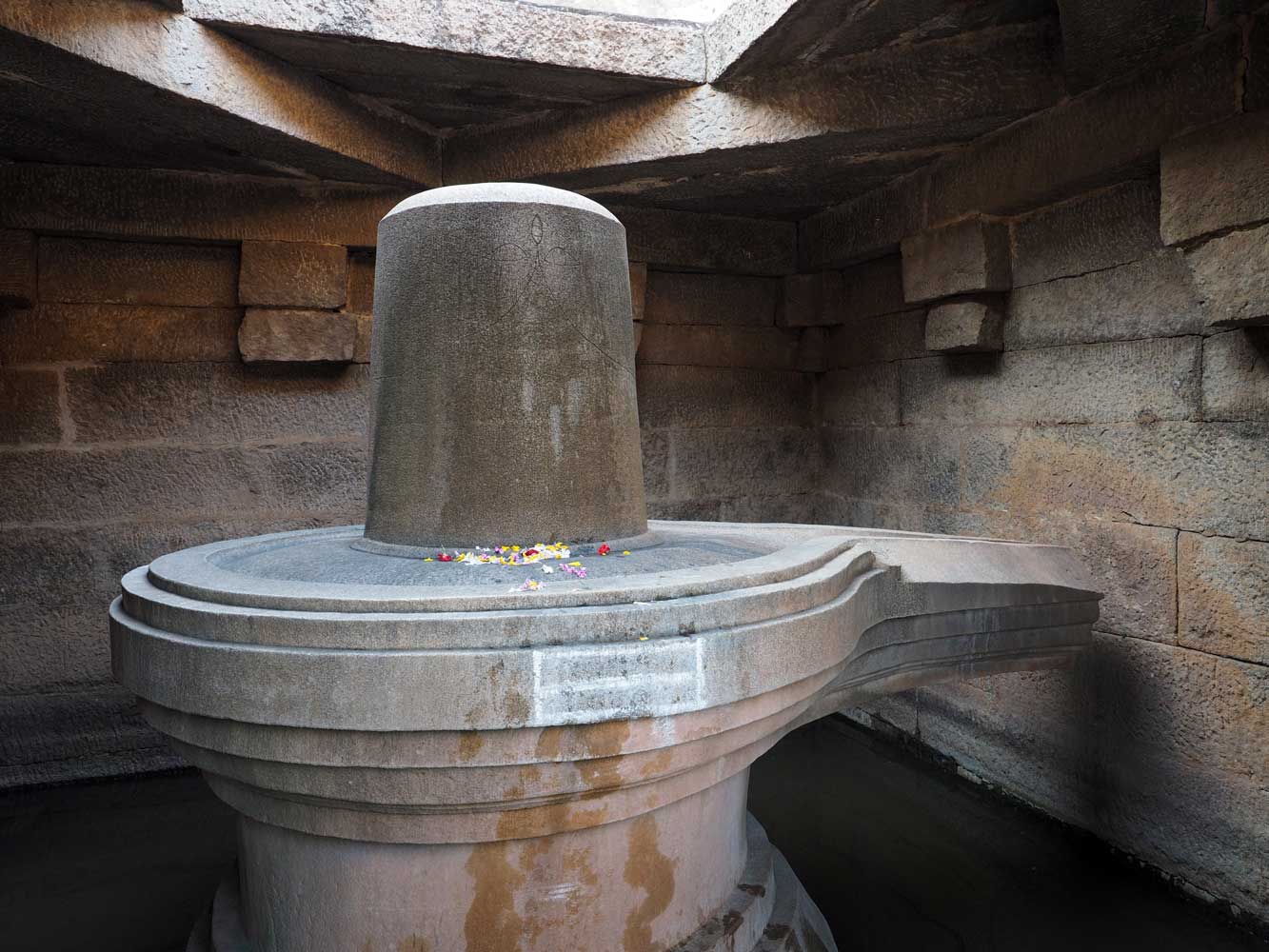
Hampi’s biggest
stone lingam

Lakshmi Narashimha
I then walked east through Krishna Bazaar to the turnoff for Matanga Hill that I had passed two days ago. Few people seem to come this way because the trail past Krishna Bazaar had become overgrown, but the trail up this south side of the hill is wide and well paved with stones and must have been the main way to the summit in olden days. At the top, a small scattered group of tourists admired the views. I peeked in the small temple, walked through semi-ruined rooms, then climbed to the roof for the best views. Achyutaraya Temple lay directly below, and Sule Bazaar and a now-dry tank spread out to the north. Picturesque boulder landscapes in every direction glowed under the golden late afternoon sun. I think everyone else had taken the northern trail to the top, and I descended it to Hampi Bazaar. This trail is far rougher and requires a bit of clambering, but I made it down OK. Back at The Mango Tree I had one last South Indian thali, then set to work to bring this journal up to date.

View east along Krishna Bazaar
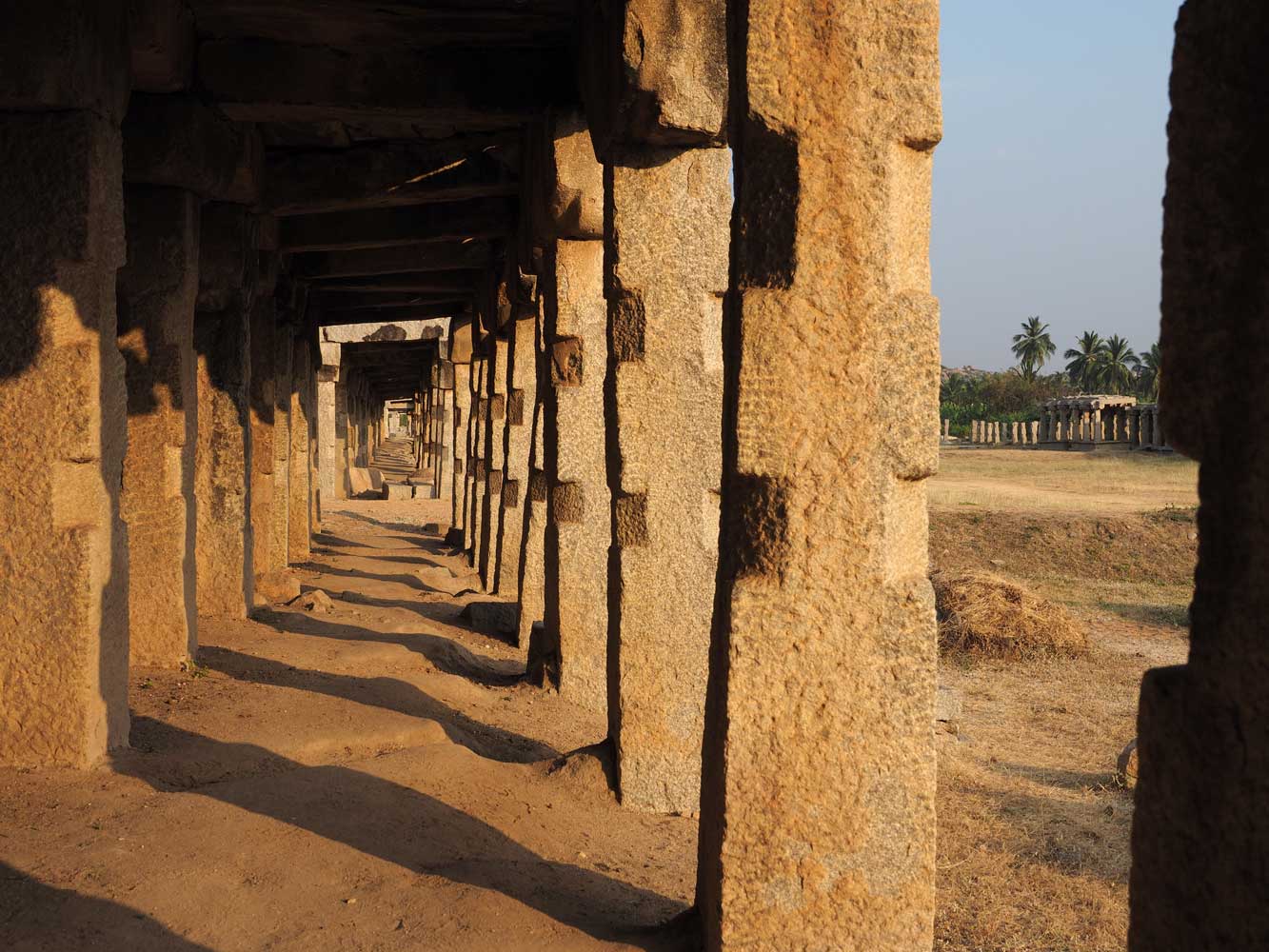
Inside Krishna Bazaar

Tank at Krishna Bazaar
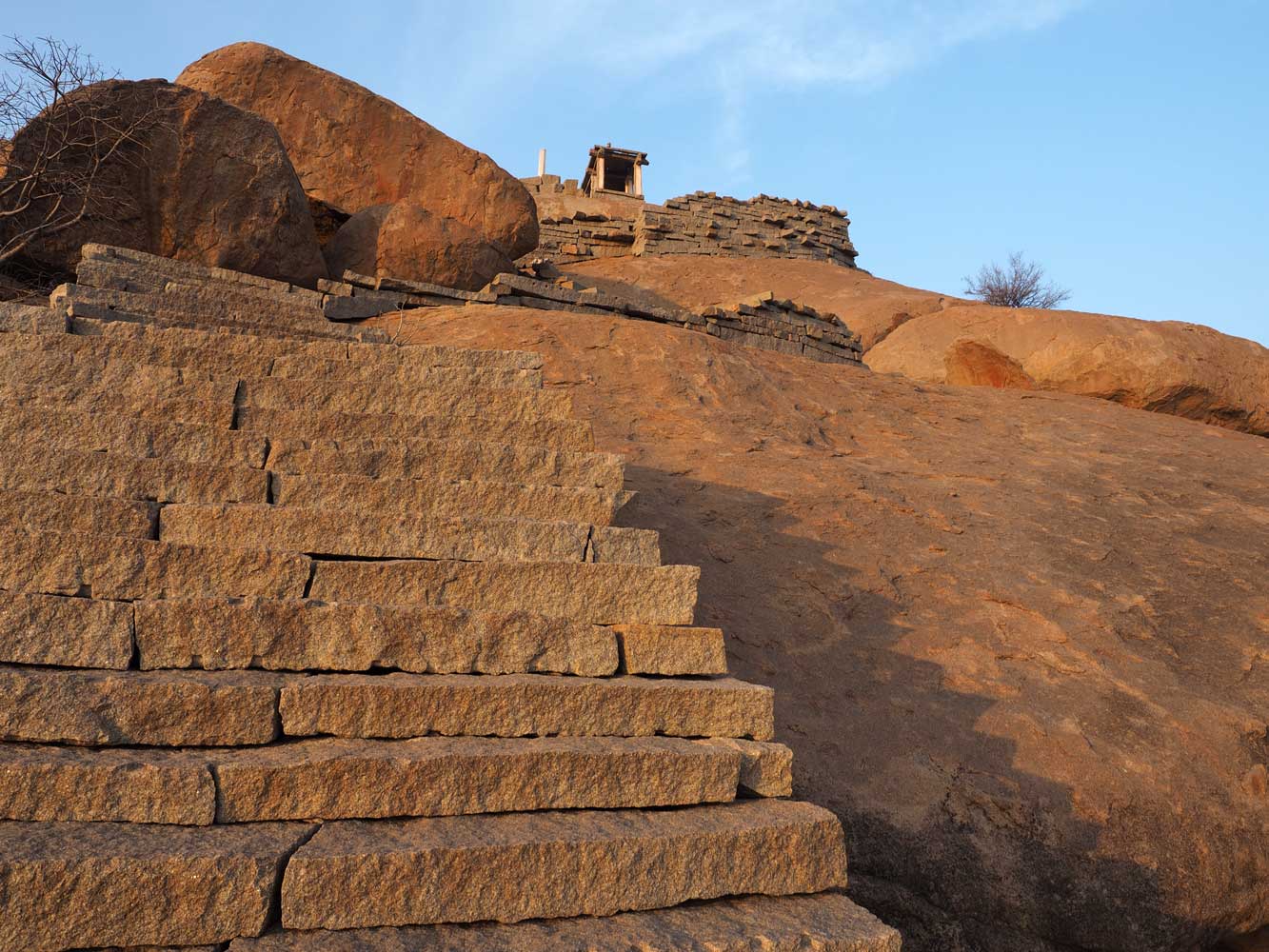
Stone staircase up the south side of Matanga Hill; I didn’t see anyone else
using this trail.

Achyutaraya Temple and its two gopuram from the summit of Matanga Hill

Tungabhadra River from Matanga Hill

A sunset perch high above Hampi Bazaar

A mish-mash of crudely placed stone steps and carved steps led down the
north side to Hampi Bazaar.
On to Badami
Back to beginning of “Backpacking 2020: India,
Singapore, and Philippines”